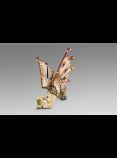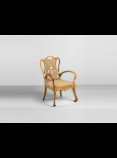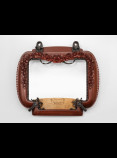Modernisme, an attitude and long road

Gargoyle. c. 1900. Fábrica Hijo de Jaime Pujol y Bausis (1891 - 1940). MCB 142901-0. Photo: Guillem Fernández-Huerta

Chair. Joan Busquets i Jané. Barcelona, 1902. MADB 138.664. Photo: Estudio Rafael Vargas

Frame. Rafael Masó i Valentí. Girona, c. 1906. MDB 1.326. Photo: Estudio Rafael Vargas
“Modernisme” is synonymous with the will to modernize a culture and to integrate into Europe. The Universal Exhibition of 1888, the first international event organized by the city of Barcelona, is considered the gateway to Europe and modernity, as well as the start date of the movement. The desire for modernity, driven by intellectuals and artists, defended culture as a regenerative instrument to overcome a local and backward atmosphere, focusing on Europe.
At the same time, overcoming it, it looked to the past, as the Renaixença (Renaissance) had done, a romantic cultural movement that had recovered native roots. Looking to the future without yielding to historical legacy constituted the singularity of Modernisme, the beginning of a long road toward modernity and at the same time the cradle of political Catalanism.
The year 1888 ushered in moments that historicisms characterize as the first Modernisme, until around 1900 when international Art Nouveau was added, which advocated art for art’s sake and nature as a model, and became known as full Modernisme. The last stage of Modernisme, a prelude to Noucentisme and precursor of rationalism, was influenced by the Viennese Secession, in fact a language also Art Nouveau.

